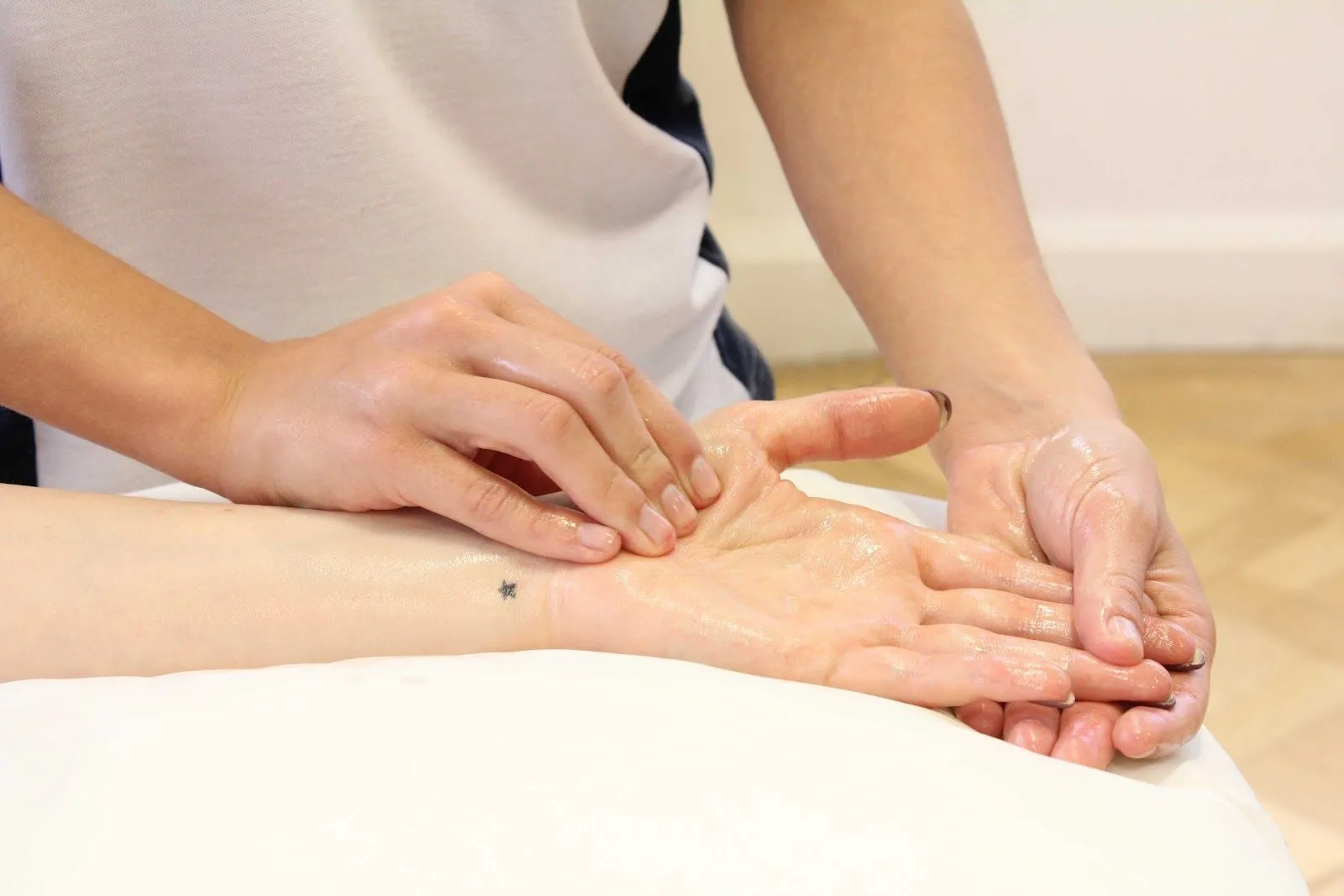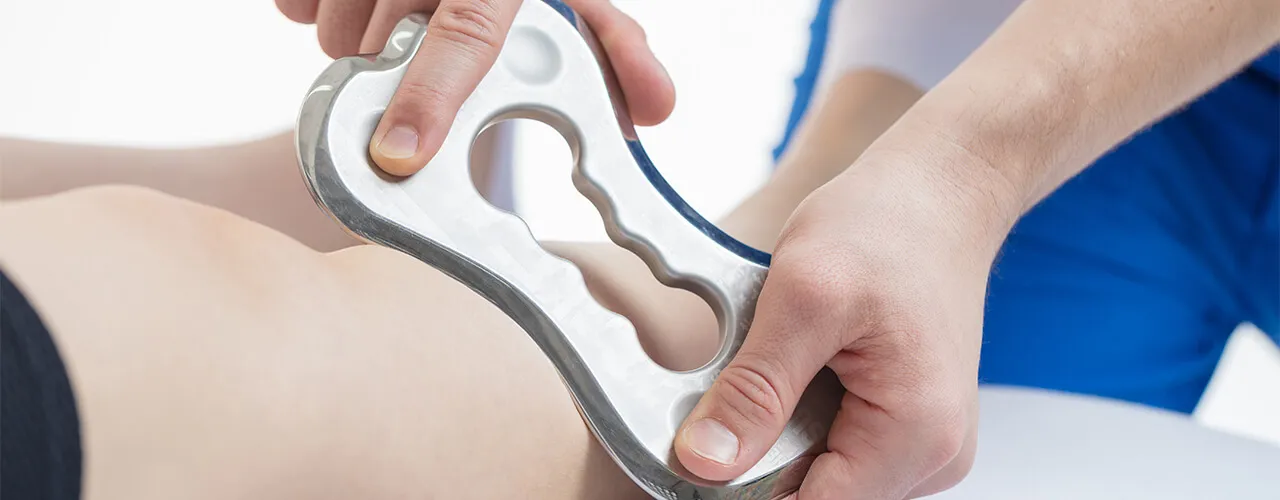
Soft tissue mobilization is a powerful technique that has been gaining recognition for its ability to enhance recovery and improve overall well-being. From relieving pain to promoting rehabilitation, the benefits of soft tissue mobilization are vast and impactful. In this blog series, we will delve into the world of soft tissue mobilization, exploring its various techniques, applications, and potential for future developments. Understanding the importance of soft tissue mobilization in healthcare, we will uncover its integration in recovery programs and its role in pain management. We will also examine the professional application of soft tissue mobilization, the latest research and evidence supporting its effectiveness, and its specialized techniques for specific conditions. Furthermore, we will explore the incorporation of soft tissue mobilization in chiropractic care, as well as its potential as a complementary therapy in holistic healthcare. By the end of this series, readers will gain a comprehensive understanding of soft tissue mobilization and its potential to revolutionize the future of healthcare.
Soft tissue mobilisation is a therapeutic technique used to enhance recovery and improve mobility. It involves the manipulation of soft tissues such as muscles, tendons, ligaments, and fascia to reduce pain, increase flexibility, and promote healing. By applying pressure and movement to the affected area, soft tissue mobilisation helps break down adhesions and scar tissue while also improving blood flow and reducing inflammation.
There are various techniques for performing soft tissue mobilisation, including deep tissue massage, myofascial release, trigger point therapy, and instrument-assisted soft tissue mobilization (IASTM). Each technique targets different aspects of the soft tissues to address specific issues such as muscle tightness or restricted range of motion. These techniques can be applied by trained healthcare professionals such as physical therapists or massage therapists who have an understanding of anatomy and biomechanics.
In healthcare settings, soft tissue mobilisation plays a crucial role in rehabilitation programs for injuries or chronic conditions. It is often integrated into treatment plans for musculoskeletal disorders, sports injuries, post-operative recovery, and repetitive strain injuries. The benefits of soft tissue mobilisation extend beyond physical rehabilitation as it also promotes relaxation and stress relief by releasing tension in the muscles.

The incorporation of soft tissue mobilisation techniques in rehabilitation programs has shown promising results in accelerating the recovery process for individuals recovering from injuries. Soft tissue mobilisation involves the manipulation and movement of muscles, tendons, ligaments, and fascia to alleviate pain, improve flexibility, and enhance overall function. By integrating these techniques into recovery programs, patients can experience reduced inflammation, improved blood circulation, and a faster return to pre-injury levels of activity.
Soft tissue mobilisation plays a crucial role in post-injury recovery by targeting specific areas of soft tissue that may have become restricted or impaired due to trauma. This targeted approach helps address scar tissue formation and muscle stiffness while promoting proper healing and restoration of normal movement patterns. The use of soft tissue mobilisation alongside traditional rehabilitation exercises can result in more comprehensive care for individuals looking to regain strength and mobility following an injury.
In enhancing recovery through the integration of soft tissue mobilisation, healthcare professionals can tailor treatment plans to meet the unique needs of each patient. By combining manual therapy techniques with personalized exercise regimens, patients can benefit from a holistic approach that addresses both the underlying cause of their injury as well as their functional goals. As research continues to support the efficacy of soft tissue mobilisation in rehabilitation settings, its inclusion in recovery programs is becoming increasingly recognized for its potential to optimize outcomes for individuals seeking to regain physical health and wellness.

Soft tissue mobilisation is effective in providing pain relief for individuals experiencing chronic pain. By targeting specific soft tissues such as muscles, tendons, and ligaments, this technique aims to improve flexibility, reduce tension, and enhance blood flow to the affected area. This can result in a reduction of pain symptoms and an overall improvement in quality of life for patients.
In addition to its standalone effectiveness, soft tissue mobilisation can also be combined with other pain management techniques such as exercise therapy or joint mobilization. When used in conjunction with these modalities, it can help address multiple aspects of the underlying issue contributing to the pain. This multidisciplinary approach allows for a more comprehensive treatment plan tailored to the individual's needs and goals.
Overall, soft tissue mobilisation offers a non-invasive and drug-free option for managing chronic pain. Its ability to target specific areas of discomfort and promote healing within the body makes it a valuable tool in enhancing recovery and improving overall well-being for those dealing with persistent pain.
Certified practitioners for soft tissue mobilisation undergo specialized training to ensure their competency in assessing and treating various musculoskeletal conditions. These professionals are equipped with the knowledge and skills necessary to perform soft tissue mobilisation techniques effectively and safely.
Specialized training for soft tissue mobilisation includes a thorough understanding of anatomy, physiology, biomechanics, and pathology related to the musculoskeletal system. Practitioners also learn about different soft tissue mobilisation techniques, contraindications, and indications for treatment. This comprehensive training allows them to tailor their approach based on individual patient needs and goals.
Ethical considerations play a crucial role in the practice of soft tissue mobilisation. Certified practitioners adhere to professional standards and guidelines to ensure patient safety, informed consent, confidentiality, respect for autonomy, and ongoing evaluation of treatment outcomes. By upholding ethical principles, professionals demonstrate a commitment to providing high-quality care while prioritizing the well-being of their patients.
Soft tissue mobilisation has been the subject of numerous scientific studies, which have consistently shown its effectiveness in improving recovery from musculoskeletal injuries. Research has demonstrated that soft tissue mobilisation techniques can help reduce pain, improve flexibility, and enhance overall function in patients with various conditions such as tendinopathies, muscle strains, and ligament sprains.
Clinical trials have further supported the benefits of soft tissue mobilisation, providing evidence of its efficacy in accelerating the healing process and promoting tissue repair. These studies have highlighted the significance of incorporating soft tissue mobilisation into rehabilitation programs for individuals recovering from sports-related injuries or post-operative interventions. The positive outcomes observed in these trials underscore the value of integrating this modality into holistic treatment protocols.
The current trends in soft tissue mobilisation research continue to explore innovative approaches and advancements in this field. Researchers are investigating new manual techniques, instrument-assisted methods, and technology-based modalities aimed at optimizing the therapeutic effects of soft tissue mobilisation. Furthermore, there is growing interest in understanding the underlying mechanisms through which soft tissue manipulation exerts its physiological impact, paving the way for more targeted and personalized interventions.
Soft tissue mobilisation techniques are widely used in the management of sports injuries. By applying specific mobilisation methods, therapists can effectively address muscle strains, ligament sprains, and other soft tissue damage commonly seen in athletes. These techniques not only help to reduce pain and inflammation but also promote faster healing and restoration of normal function, allowing athletes to return to their sport more quickly.
In the field of musculoskeletal disorders, soft tissue mobilisation has proven to be highly beneficial. Whether it is addressing chronic conditions such as osteoarthritis or acute issues like tendonitis, customized mobilisation techniques can target the affected tissues with precision. This targeted approach helps to improve blood flow, reduce scar tissue formation, and enhance flexibility and strength in the affected area. As a result, patients experience improved mobility and reduced pain levels.
Healthcare professionals often tailor soft tissue mobilisation techniques according to individual needs. For example, elderly patients may benefit from gentle mobilisation methods aimed at improving circulation and reducing stiffness in arthritic joints. On the other hand, younger individuals recovering from orthopaedic surgeries may require more intensive mobilisation procedures to regain muscle strength and range of motion. By customizing these techniques based on specific conditions and patient requirements, healthcare providers can optimize recovery outcomes.

Soft tissue mobilisation has become an integral part of chiropractic care due to its numerous benefits. By incorporating soft tissue mobilisation techniques, chiropractors can effectively address musculoskeletal issues and promote faster recovery in their patients. This form of treatment allows for targeted manipulation of the soft tissues, helping to reduce pain, improve mobility, and enhance overall patient well-being.
Collaboration between chiropractors and soft tissue mobilisation specialists is essential for providing comprehensive care to patients. By working together, they can develop personalized treatment plans that integrate both spinal adjustments and soft tissue manipulation. This collaborative approach ensures that patients receive a holistic treatment experience that addresses all aspects of their condition, leading to more effective outcomes.
Several case studies have demonstrated the efficacy of incorporating soft tissue mobilisation in chiropractic care. These studies have shown improvements in patient outcomes such as reduced pain levels, increased range of motion, and enhanced functional abilities. The evidence supporting the use of soft tissue mobilisation reinforces its value as a complementary therapy within the field of chiropractic care.

Soft tissue mobilisation has emerged as an effective complementary therapy that can be integrated with other holistic approaches to improve patient outcomes. By incorporating soft tissue mobilisation into traditional healthcare practices such as physiotherapy, chiropractic care, and massage therapy, patients can experience enhanced recovery and improved overall well-being.
Incorporating soft tissue mobilisation into a comprehensive treatment plan allows for a more targeted approach to addressing musculoskeletal issues. This form of therapy can help release tension in muscles, reduce pain, and improve range of motion. When used in conjunction with other modalities such as exercise, stretching, and manual therapy techniques, soft tissue mobilisation can contribute significantly to the rehabilitation process.
Patients who have undergone combined therapies including soft tissue mobilisation often report positive experiences and better outcomes compared to those receiving conventional treatments alone. The synergistic effects of integrating multiple therapeutic approaches create a more holistic healing environment that addresses both physical and emotional aspects of recovery.

Technological advancements in soft tissue mobilisation are expected to revolutionize the way healthcare professionals address musculoskeletal issues. With the integration of artificial intelligence, virtual reality, and robotics, the precision and effectiveness of soft tissue mobilisation techniques are likely to improve significantly. This could lead to more personalized treatment plans and better patient outcomes.
Innovative approaches to soft tissue mobilisation, such as instrument-assisted techniques and novel manual methods, are currently being explored by researchers and practitioners. These new approaches aim to optimize the efficiency of soft tissue manipulation while minimizing discomfort for patients. By harnessing cutting-edge technologies and continuously refining existing practices, future developments in this field hold great promise for improving therapeutic interventions.
The potential impact of soft tissue mobilisation on future healthcare cannot be overstated. As our understanding of human anatomy and biomechanics deepens, so too does our ability to enhance recovery through targeted soft tissue mobilization. This has the potential to reduce reliance on invasive procedures or long-term medication use for certain conditions, making it a valuable asset in promoting holistic wellness.
At Prime Chiro, we understand the importance of finding the best chiropractor near you in Lansvale NSW and the surrounding areas of Fairfield, Liverpool, and Cabramatta. Our team of experienced professionals is dedicated to providing top-notch chiropractic care and consultation to individuals in need. Whether you are dealing with back pain, neck pain, headaches, or other musculoskeletal issues, we are here to help. Our goal is to help you achieve optimal health and wellness through personalized treatment plans and expert care. Contact Prime Chiro today to schedule a consultation and take the first step towards a pain-free life.
Soft tissue mobilisation is a manual therapy technique that involves applying pressure to the soft tissues of the body, such as muscles, tendons, and ligaments, to improve mobility and reduce pain.
Soft tissue mobilisation enhances recovery by increasing blood flow to the affected area, promoting the healing process, reducing inflammation, and improving range of motion.
Soft tissue mobilisation can benefit individuals who have musculoskeletal injuries, chronic pain conditions, post-surgical recovery, or those looking to improve athletic performance.
Soft tissue mobilisation may cause some discomfort during the treatment, but it should not be excessively painful. The therapist will adjust the pressure and technique based on your comfort level.
The number of sessions required for noticeable results may vary depending on the individual's condition and response to treatment. Typically, a series of sessions is recommended for optimal outcomes.
TL;DR: Soft tissue mobilisation is a valuable technique for enhancing recovery and pain management in healthcare. This blog covers the benefits, techniques, and integration of soft tissue mobilisation in rehabilitation, chiropractic care, and complementary therapies. It also discusses the evidence, research, and future developments in this field, highlighting its potential impact on future healthcare.